You’ve likely heard of Greek olive oil’s reputation, but have you ever wondered what makes Crete’s “liquid gold” so special? This Mediterranean island’s unique climate, ancient traditions, and diverse olive varieties combine to create some of the world’s finest olive oils. From the robust Koroneiki to the smooth Tsounati, Cretan olives yield oils with distinct flavors and health benefits that have captivated gourmets and wellness enthusiasts alike.
In this comprehensive guide, we’ll take you on a journey through the rich heritage of Greek olive oil, with a special focus on Crete’s exceptional offerings. You’ll discover the ancient roots of olive cultivation on the island, explore the unique qualities of Cretan olive varieties, and learn about the meticulous production processes that ensure top-quality oil.
We’ll delve into the health benefits and culinary uses of this precious elixir, examine its impact on the global stage, and even guide you through the art of choosing and storing the perfect bottle. From sustainability initiatives to the burgeoning olive oil tourism industry, you’ll gain a deep appreciation for why Crete’s liquid gold continues to shine on the global stage and how it’s shaping the future of olive oil production.
The Legacy of Greek Olive Oil: From Ancient Roots to Minoan Mastery
Crete’s ancient olive groves stand as living monuments to millennia of history. The island’s gnarled olive trees have witnessed the rise and fall of civilizations, with olive cultivation dating back to around 3500 BCE during the Early Minoan period, making Crete the birthplace of olive oil production in the world.

Archaeological discoveries provide tangible evidence of Crete’s ancient olive oil industry. Massive stone spouted press-beds, unearthed at sites like Kommos, Knossos, Phaistos, and Malia, offer insight into ancient extraction methods. At the Palace of Kato Zakros, 3,600-year-old olives in a sunken cup provide a direct link to Crete’s enduring olive oil history.
The Minoans revolutionized olive oil production, turning it into an art form and a cornerstone of their economy. By 1600 BCE, Minoan ports were bustling hubs of olive oil trade. Elegant alabastra and sturdy stirrup jars stood ready, filled with pure Cretan olive oil destined for export, symbolizing Minoan ingenuity and marking the beginning of a trade that would span the Mediterranean.

Key aspects of Minoan olive oil mastery:
- Transformation from small-scale activity to extraordinary industry
- Vast olive groves showcasing intensive cultivation techniques
- Sophisticated production facilities with intricate systems for efficiency
- Large-scale production by the 2nd millennium BCE
- Creation of a valuable market product prized across the ancient world
By the 2nd millennium BCE, Crete was producing olive oil on an impressive industrial scale. Ancient traders loaded amphorae with precious Cretan olive oil onto ships bound for distant shores, spreading its influence to Greece, North Africa, and beyond.
The cultural significance of olive oil extended beyond Crete.
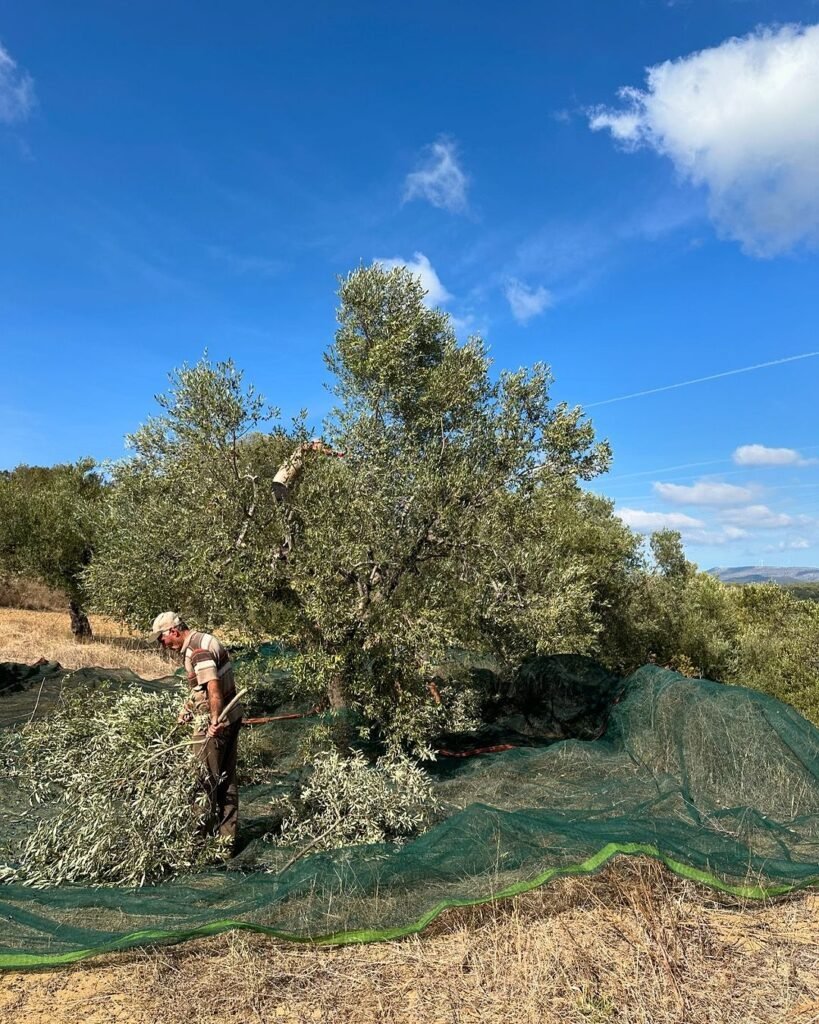
In Athens, legend held that the goddess Athena bestowed the olive tree as a divine gift, symbolizing peace and prosperity. This myth underscores the importance of olive oil in ancient Greek civilization.
The Minoans of Crete were the first culture to achieve such remarkable success through olive oil production and trade. Their legacy lives on in the groves that still dot the Cretan landscape and in the continuing tradition of olive oil production that remains central to the island’s economy and culture. The story of Cretan olive oil is not just one of agricultural prowess, but of an enduring cultural heritage that has shaped the Mediterranean world for millennia.

Greek Olive Varieties and Their Unique Qualities: Spotlight on Cretan Olives
Greece is home to over 150 different olive varieties, a testament to the country’s diverse microclimates and centuries of cultivation. When it comes to Crete’s liquid gold, two native varieties stand out from the crowd: Koroneiki and Tsounati. These olives are the foundation of Crete’s exceptional olive oil, renowned for its flavor, low acidity, and high antioxidant content.

Koroneiki: The Queen of Olives
Koroneiki, often hailed as the “queen of olives,” is the crown jewel of Cretan olive oil production. Its reign dates back to the Minoan era, providing a living link to the island’s ancient olive oil legacy. Koroneiki trees are compact in size but abundant in fruit, producing olives that pack a powerful punch in terms of flavor and quality.
Key characteristics of Koroneiki olive oil:
- Exceptionally low acidity, often below 0.5%
- Complex flavor profile with fruity notes
- Pleasant bitterness with a peppery finish
- High in polyphenols, powerful antioxidants
- Prized worldwide, now cultivated in many countries
Tsounati: The Hardy Adaptor
Tsounati, also known as Throumbolia, is Koroneiki’s hardy cousin. These olives thrive in Crete’s diverse microclimates, from sun-baked coastal regions to cooler mountain slopes. Their adaptability is a nod to the intensive cultivation techniques perfected by the Minoans during the Late Bronze Age.

Notable features of Tsounati olive oil:
- Robust, full-bodied flavor
- Hints of fresh grass and artichoke
- Pleasantly bitter finish
- Adaptable to various growing conditions
- Reflects the diverse Cretan terroir

The Unique Qualities of Cretan Olive Oil
Cretan olive oil, particularly from these varieties, stands out for its exceptional qualities:
- Flavor Profile: The oil’s intense fruitiness is a testament to the Koroneiki and Tsounati olives. Notes of fresh-cut grass and tomato leaf mingle with subtle artichoke undertones, creating a flavor profile as complex as Crete’s history. The pleasant bitterness gives way to a peppery finish, leaving a gentle warmth at the back of the throat – the telltale sign of high-quality oil rich in polyphenols.
- Low Acidity: Cretan olive oils boast remarkably low acidity levels, often below 0.5% and sometimes as low as 0.1%. This is particularly impressive considering that the international standard for extra virgin olive oil requires an acidity level of no more than 0.8%. The low acidity is a result of meticulous cultivation and production methods perfected over millennia.
- High Antioxidant Content: Rich in polyphenols, Cretan olive oil is a powerful antioxidant that protects the body from harmful free radicals. This high antioxidant content contributes to the oil’s renowned health benefits and is a key component of the heart-healthy Mediterranean diet.
- Versatility in Cuisine: From finishing touches on grilled fish to key ingredients in traditional dishes, Cretan olive oil’s unique qualities make it a versatile and indispensable element in Mediterranean cuisine.

The combination of these qualities has garnered international acclaim for Cretan olive oils, winning awards and capturing the hearts of food enthusiasts worldwide. Each bottle is more than just a culinary ingredient – it’s a taste of history, a health booster, and a connection to an island where olive oil isn’t just produced, but revered.

Greek Olive Oil Production and Classification: From Grove to Bottle
Crete’s olive oil production blends ancient wisdom with modern innovation, honoring its roots dating back to when the Minoans first mastered large-scale olive oil production. Today’s process, while technologically advanced, still respects traditional methods, resulting in oils of exceptional quality that meet stringent classification standards.

The Production Process
The journey from olive grove to bottle unfolds in four distinct stages:
- Harvesting: Olives are harvested by hand or with mechanical harvesters. Hand-picking involves skilled workers plucking olives from branches, while mechanical harvesters gently shake the trees to collect the fruit.
- Transportation: In areas with steep terrains, donkeys are still used to transport olives, a method unchanged since Minoan times. This traditional approach ensures the olives reach the mill in optimal condition. In more accessible areas, modern vehicles are used.
- Pressing: Modern mills have replaced the massive stone press-beds of Minoan palaces, but the principle remains similar. Olives are crushed into a paste, and the oil is extracted without heat or chemicals, preserving its exceptional qualities.
- Bottling: The fresh oil is carefully stored and bottled, often in dark glass to protect it from light damage. This practice helps maintain the oil’s quality and extend its shelf life.

Classification and Quality Standards
Greece adheres to international standards set by the International Olive Council, but also implements additional national regulations to safeguard exceptional quality. The resulting hierarchy of grades tells its own story of quality and craftsmanship:
- Extra Virgin Olive Oil (EVOO): The crown jewel, with acidity below 0.8% and impeccable sensory characteristics. This is the oil that would have graced Minoan tables, a testament to timeless quality.
- Virgin Olive Oil: Slightly higher acidity, but still naturally produced without refinement. It carries the authentic taste of Greek olives, pure and unadulterated.
- Refined Olive Oil: Processed to remove flaws, resulting in a neutral taste. While it lacks the complexity of its virgin counterparts, it still carries the essence of Greek olive tradition.
- Agoureleo (Early Harvest Extra Virgin Olive Oil): A premium category that elevates EVOO to new heights. Produced from unripe olives harvested between late October and early December, it boasts extremely low acidity (often between 0.1% and 0.2%) and high polyphenol content. Its intense, fruity flavor with a distinctive peppery finish and bright green color make it a true delicacy.
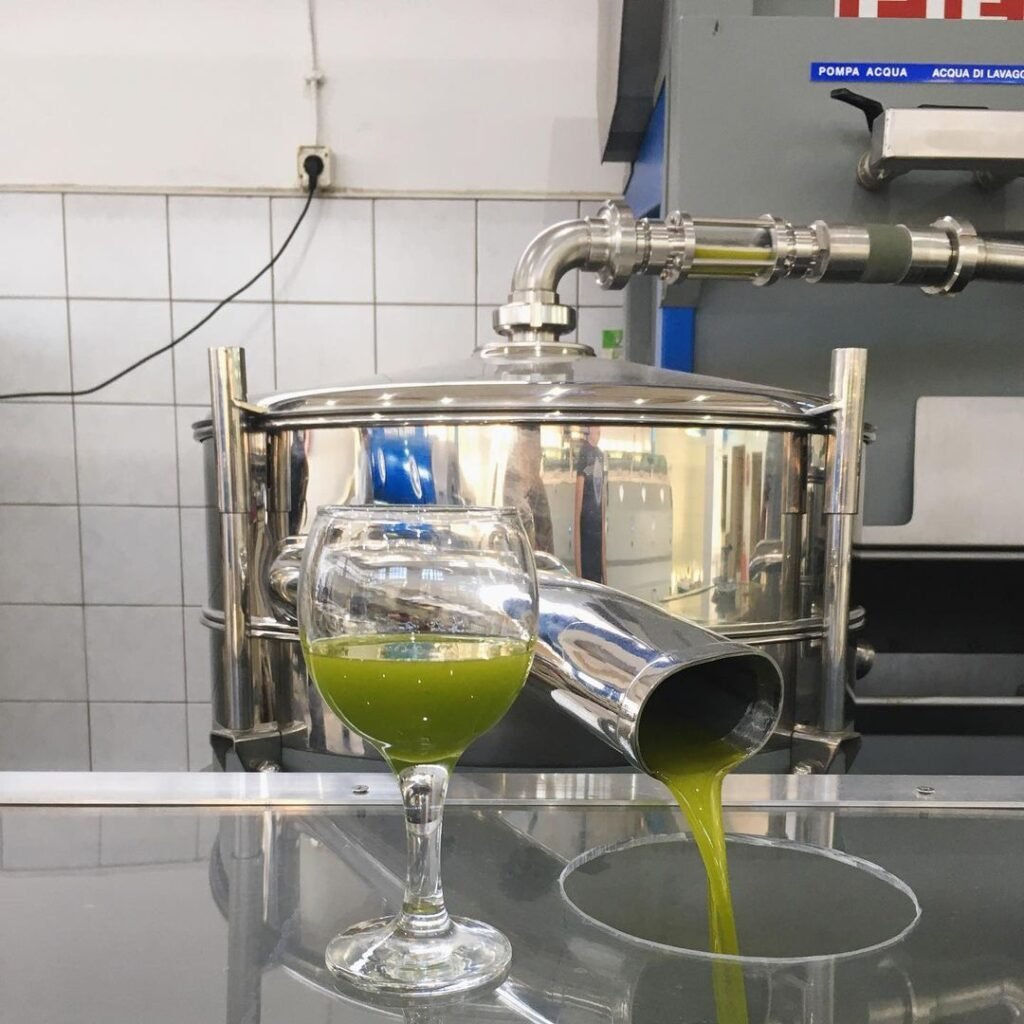
Protected Designation of Origin (PDO) Labels
Several Cretan olive oils have earned Protected Designation of Origin (PDO) status, guaranteeing their authenticity and excellence:
- Kolymvari PDO from western Crete: Rich and fruity, evoking the warmth of the Cretan sun.
- Sitia PDO from eastern Crete: Delicate and low in acidity, reflecting the area’s unique microclimate.
- Peza PDO from central Crete: Known for its balanced flavor profile, combining the fruitiness of green olives with a mild peppery finish.

The production process combines traditional methods with modern technology, creating a balance that contributes to Crete’s reputation for high-quality olive oil. Experienced farmers work alongside state-of-the-art machinery, ensuring that each bottle of Cretan olive oil meets the highest standards of quality and authenticity.
These classifications and PDO labels aren’t just markers of quality; they’re a testament to the rich heritage and ongoing innovation in Greek olive oil production. When you choose a bottle of Cretan olive oil, you’re not just selecting a product – you’re participating in a tradition that spans millennia, from the ancient Minoan groves to the modern global stage.

Health Benefits and Culinary Uses of Greek Olive Oil
Greek olive oil, particularly from Crete, offers a remarkable combination of health benefits and culinary versatility. Its impact on well-being and cuisine is significant, making it a cornerstone of the Mediterranean diet and Cretan gastronomy.
Health Benefits
Greek olive oil, especially extra virgin varieties, is renowned for its numerous health benefits:
- Cardiovascular Health: Rich in monounsaturated fats, it supports heart health by helping to lower bad cholesterol levels and reduce the risk of heart disease.
- Anti-Inflammatory Properties: Packed with potent antioxidants, particularly polyphenols, it acts as a natural defense system against inflammation in the body.
- Diabetes Prevention: Regular consumption may help reduce the risk of type 2 diabetes by improving insulin sensitivity.
- Potential Cancer Protection: Some studies suggest that the antioxidants in olive oil may offer protection against certain types of cancer.
- Brain Health: The high content of oleocanthal, a natural anti-inflammatory compound, may help protect against cognitive decline and reduce the risk of Alzheimer’s disease.

A unique Cretan tradition underscores the perceived health benefits of olive oil: some Cretan farmers and fishermen start their day with a small amount of extra virgin olive oil, ranging from a shot to a small glass, taken on an empty stomach. While not universally practiced, this custom exemplifies the central role olive oil plays in Cretan life and highlights its cultural significance.

Culinary Uses
In Cretan cuisine, olive oil is more than just an ingredient—it’s a fundamental element that ties the cuisine together. Its use is so prevalent that cooking without olive oil is rare in Crete. Here’s how it’s commonly used:
- Raw Applications:
- Salad Dressings: The backbone of traditional Greek salads like horiatiki (village salad).
- Dips: Essential in popular dips like tzatziki, skordalia and fava.
- Finishing Touch: Drizzled over grilled meats, fish, and vegetables just before serving.
- Cooking:
- Sautéing and Frying: Used for cooking vegetables, meat, and fish.
- Baking: Incorporated in traditional bread and pastry recipes.
- Marinades: A key component in marinades for meats and vegetables.
- Traditional Dishes:
- Horta: Wild greens dressed generously with olive oil and lemon juice.
- Dakos: A Cretan rusk topped with tomatoes, crumbled feta or myzithra cheese, and a liberal drizzle of olive oil.
- Gemista: Stuffed vegetables like tomatoes and peppers, where olive oil is used both in the filling and for cooking.
- Modern Culinary Innovations:
- Olive Oil Ice Cream: A unique dessert that showcases the oil’s fruity notes.
- Olive Oil Cocktails: Used in modern mixology for its texture and flavor.
- Olive Oil Cakes: Moist, flavorful cakes that use olive oil instead of butter.
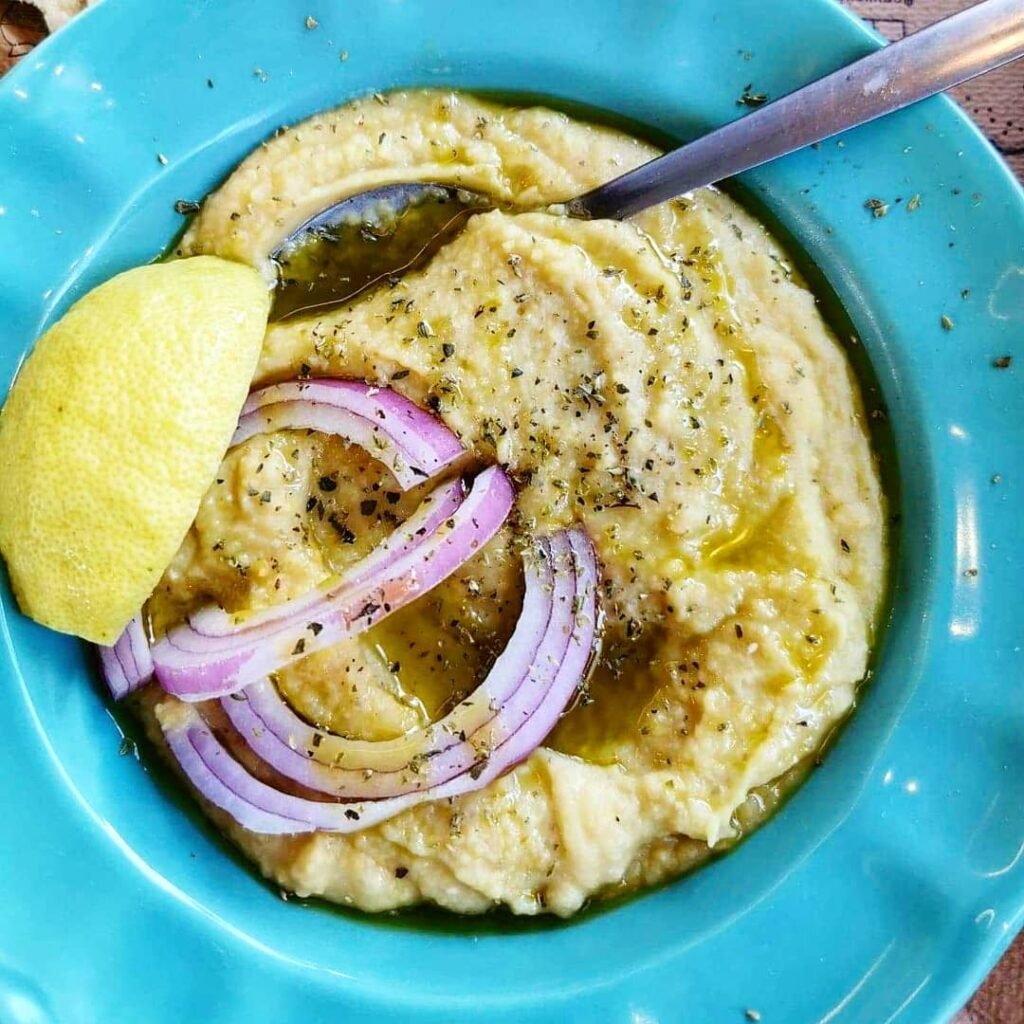
The versatility of Greek olive oil in the kitchen is matched only by its health benefits. From simple tomato salads to more elaborate traditional recipes, Cretan olive oil elevates both the taste and nutritional value of food. Its use in cooking is not just about flavor, but also about carrying forward a culinary tradition that has been central to Cretan culture for millennia.
Whether you’re drizzling it over a salad, using it to sauté vegetables, or incorporating it into a traditional Cretan dish, Greek olive oil offers a perfect blend of flavor and nutrition. It’s a testament to the Mediterranean way of life, where good food and good health go hand in hand.

Sustainability, Innovation, and Global Impact of Greek Olive Oil
Greek olive oil producers, particularly in Crete, are embracing sustainability and innovation to safeguard their industry’s future while maintaining a strong presence on the global stage. This approach has solidified Greece’s position as a leading olive oil producer and exporter, with Cretan varieties gaining particular recognition worldwide.
Sustainability and Innovation
Cretan olive groves now showcase a blend of traditional methods and cutting-edge technology, adapting to face mounting environmental challenges:
- Traditional practices:
- Using donkeys to transport olives on steep terrains
- Maintaining ancient cultivation techniques
- Modern innovations:
- Drone technology for precision crop monitoring
- Solar-powered irrigation systems
- Development of heat-resistant olive varieties

Cretan farmers have adopted organic practices to combat the effects of climate change, helping preserve the groves and ensure sustainable production. Simultaneously, scientists across the Mediterranean are working to identify and develop olive varieties capable of withstanding rising temperatures.
However, while these scientific efforts are crucial for the future of olive oil production, they also present a complex challenge. The development of heat-resistant varieties raises important questions about preserving the authentic characteristics that have made Cretan olive oil renowned for millennia. As we embrace innovation to combat climate change, we must also consider how to maintain the unique qualities and rich heritage of traditional Cretan olive varieties.
There are concerns that man-made or artificially altered olive varieties, even if more resilient to heat, may not possess the same flavor profiles, nutritional content, or cultural significance as the traditional varieties. This presents a delicate balancing act between ensuring the survival of olive cultivation and preserving the authentic essence of Cretan olive oil.
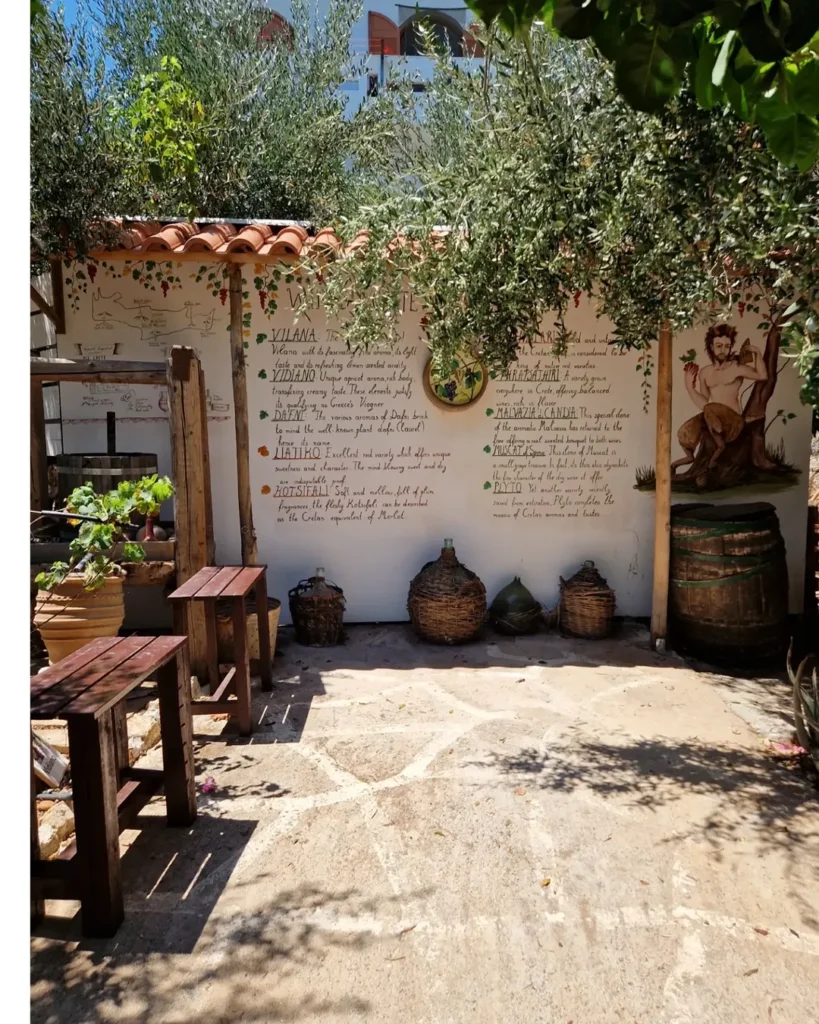
The balance between tradition and innovation extends to the production process itself. Modern extraction facilities in Crete now employ the latest technologies to maintain the island’s reputation for world-class olive oil. These state-of-the-art methods not only ensure high-quality production but also minimize environmental impact, demonstrating the industry’s commitment to both excellence and sustainability.
Greek Olive Oil on the Global Stage
Greece has emerged as a star performer in the global olive oil market, ranking among the world’s top three producers. Key statistics and achievements include:
- Production and Quality:
- 75-82% of Greek olive oil production is classified as extra virgin
- In the 2022/23 crop year, Greece was the only European country to increase production
- Greece solidified its position as the second-largest producer after Spain
- Economic Impact:
- The olive oil sector contributes about 11% of Greece’s total agricultural exports
- Main export destinations include Italy, Germany, the United States, and Canada
- International Recognition:
- Cretan olive oils have garnered prestigious awards at international competitions
- Crete has emerged as the most awarded region globally
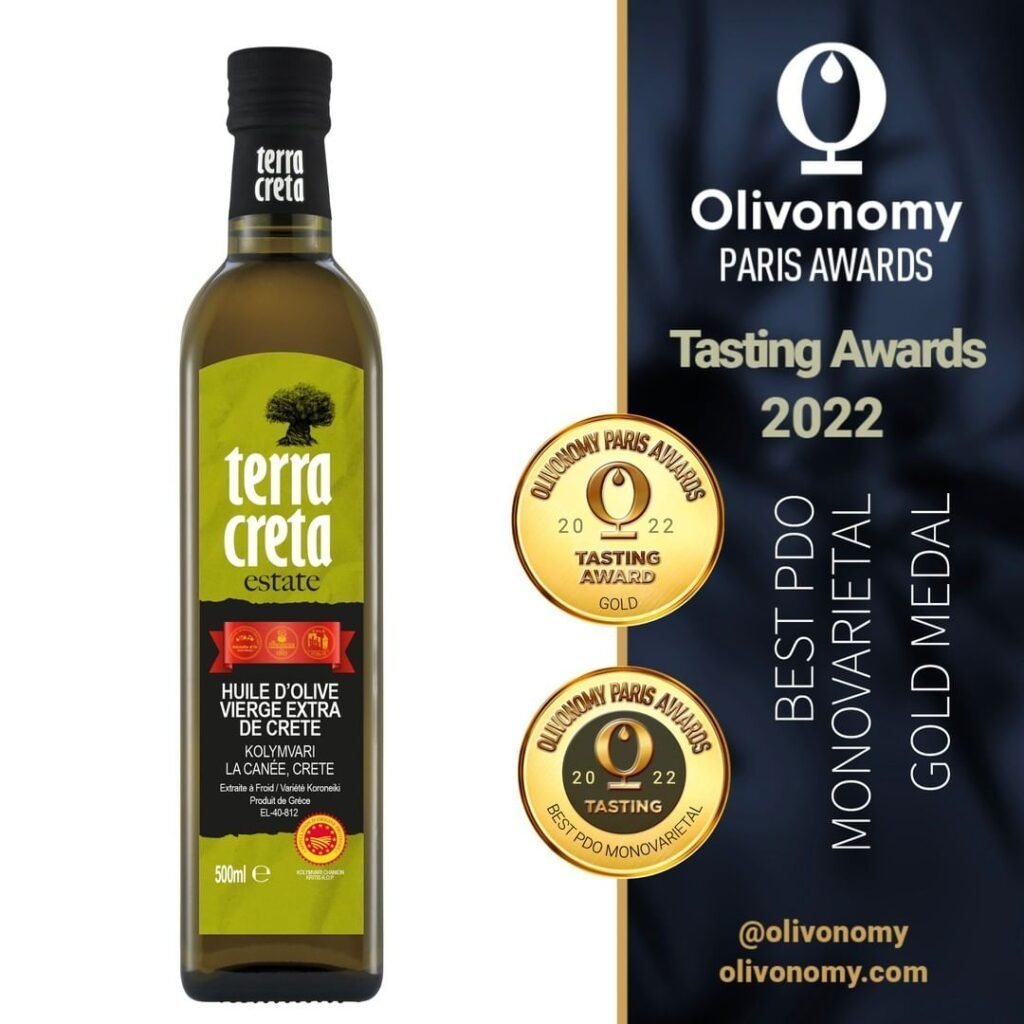
Notable achievements include:
- 43 extra virgin olive oils received awards at the 10th Cretan Olive Oil Competition
- Terra Creta secured three Gold Awards at the NYIOOC World Olive Oil Competition
- Pamako earned Gold Awards for four consecutive years at NYIOOC
The success of Greek, particularly Cretan, olive oils on the international stage can be attributed to several factors:
- Unique Microclimate: Crete’s special growing conditions contribute to distinctive flavor profiles
- Traditional Cultivation Methods: Time-honored techniques passed down through generations
- Strict Quality Control: Rigorous standards ensure consistently high-quality products
- Health-Conscious Consumer Trends: Growing awareness of the health benefits of high-quality extra virgin olive oil has boosted demand for Greek products

Looking ahead, the Greek olive oil industry faces both opportunities and challenges. While demand for high-quality extra virgin olive oil is projected to grow, especially in emerging markets like China and India, Greek producers will need to navigate issues such as increasing competition and the potential impacts of climate change on production.The industry’s commitment to sustainability and innovation, combined with the exceptional quality of its products, positions Greek olive oil well for continued success on the global stage. As consumers become more discerning about their olive oil choices, Greek producers are well-positioned to meet this demand with their premium offerings.
Choosing and Storing Greek Olive Oil
Selecting and preserving Greek olive oil properly ensures you experience the best quality and flavor. When choosing your olive oil, look for these key factors:

- Classification: Seek out “Extra Virgin” on the label, which guarantees the highest quality and purity.
- Origin: Look for PDO (Protected Designation of Origin) labels, especially for Cretan varieties like Kolymvari, Sitia or Peza.
- Harvest Date: Fresher is better. Look for a harvest date or “best by” date, ideally within the last year.
- Packaging: Choose dark glass bottles or tins, which protect the oil from light damage.
- Aroma and Taste: If possible, sample the oil. High-quality Greek olive oil should have a fruity aroma with hints of grass or herbs, and a slightly bitter, peppery taste.
Once you’ve selected your olive oil, proper storage is crucial:
- Temperature: Store in a cool place, ideally between 14°C to 21°C (57°F to 70°F ).
- Light: Keep the oil away from direct sunlight and artificial light.
- Air: Ensure the bottle is tightly sealed when not in use to prevent oxidation.
- Duration: Use within 12-18 months of the harvest date for optimal flavor.
- Container: If transferring to another container, use dark glass or stainless steel.
Remember, olive oil is best consumed fresh. Unlike wine, it doesn’t improve with age. Regular use ensures you’re enjoying the oil at its peak quality.

Olive Oil Tourism in Crete
Crete’s olive oil culture extends beyond production, offering immersive tourism experiences that showcase the island’s rich heritage. Visitors can engage in various activities that highlight the importance of olive oil in Cretan life and economy.
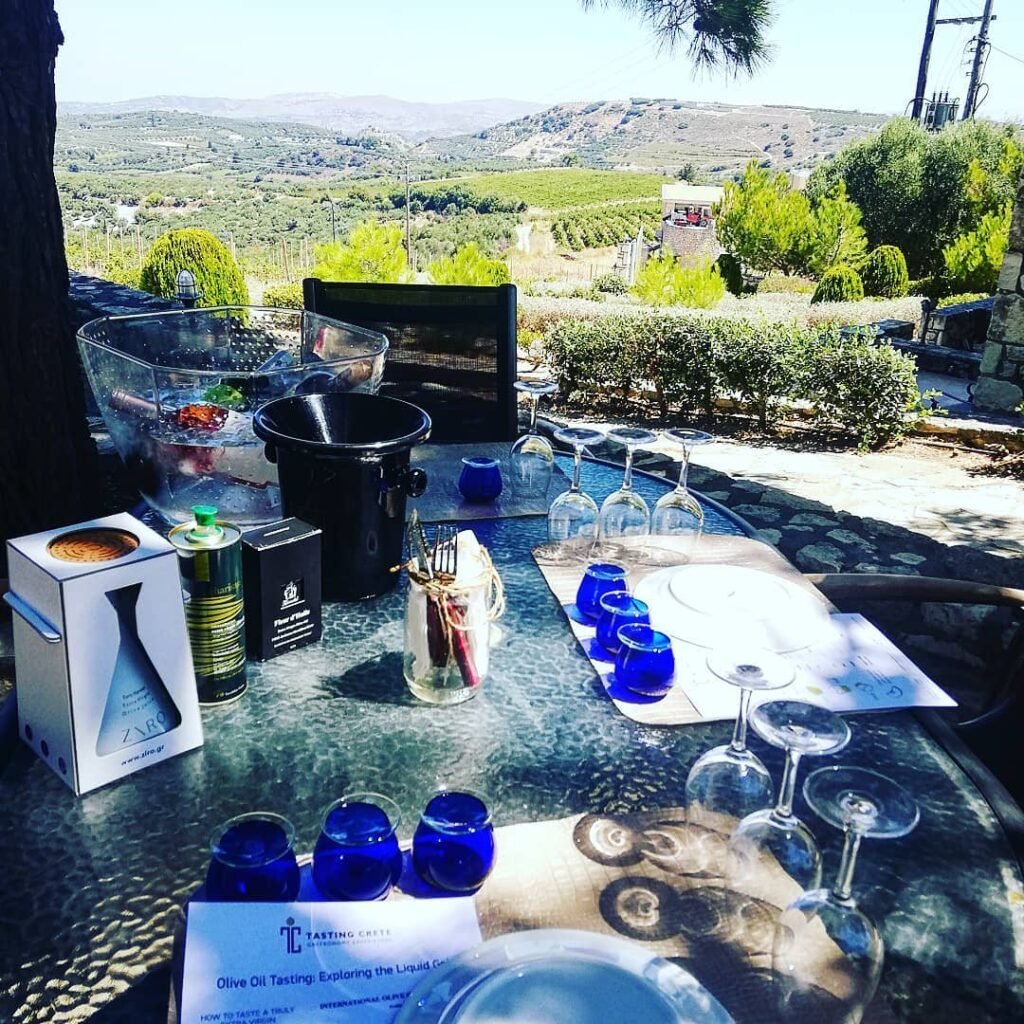
Key olive oil tourism experiences in Crete include:
- Guided tours of olive groves and mills: These tours provide insight into both traditional and modern olive cultivation and oil production methods. Visitors can see ancient groves with centuries-old trees as well as state-of-the-art processing facilities.
- Seasonal harvesting experiences: During the autumn harvest season, tourists can participate in olive picking, learning traditional techniques handed down through generations.
- Oil tasting sessions: Expert-led tastings help visitors distinguish between different olive varieties and grades of oil, appreciating the nuanced flavors of Crete’s renowned olive oils.
- Culinary workshops: Cooking classes demonstrate the versatility of olive oil in Cretan cuisine, from traditional dishes to modern culinary innovations.
- Museum visits: Several museums across Crete are dedicated to the history and culture of olive oil production, offering a historical perspective on this important industry.
- Village tours: Visits to traditional Cretan villages provide opportunities to interact with local producers and understand the role of olive oil in daily Cretan life.
- Olive oil spa treatments: Some resorts offer spa treatments using local olive oil, highlighting its cosmetic and therapeutic uses.

These tourism initiatives not only educate visitors about olive oil production but also support local economies and promote sustainable agriculture. They offer a unique way to experience Cretan culture, connecting tourists with the island’s agricultural heritage and the people who maintain these traditions.
Conclusion
From ancient Minoan groves to modern, award-winning bottles, Cretan olive oil embodies a legacy of excellence spanning millennia. This journey through Greek olive oil reveals a profound cultural heritage, innovative production methods, and uncompromising quality that distinguishes Cretan oil globally. Each drop carries the warmth of the Mediterranean sun, generations of expertise, and the island’s vibrant spirit. As you savor its complex flavors, remember you’re partaking in a living tradition that continues to shape Crete’s identity and captivate palates worldwide.

